

 The Accurate Reloading Forums
The Accurate Reloading Forums  THE ACCURATE RELOADING.COM FORUMS
THE ACCURATE RELOADING.COM FORUMS  Other Topics
Other Topics  Air Rifle
Air Rifle  Test Report On Evanix Monster 9mm Air Rifle
Test Report On Evanix Monster 9mm Air RifleGo  | New  | Find  | Notify  | Tools  | Reply  |  |
| Administrator |
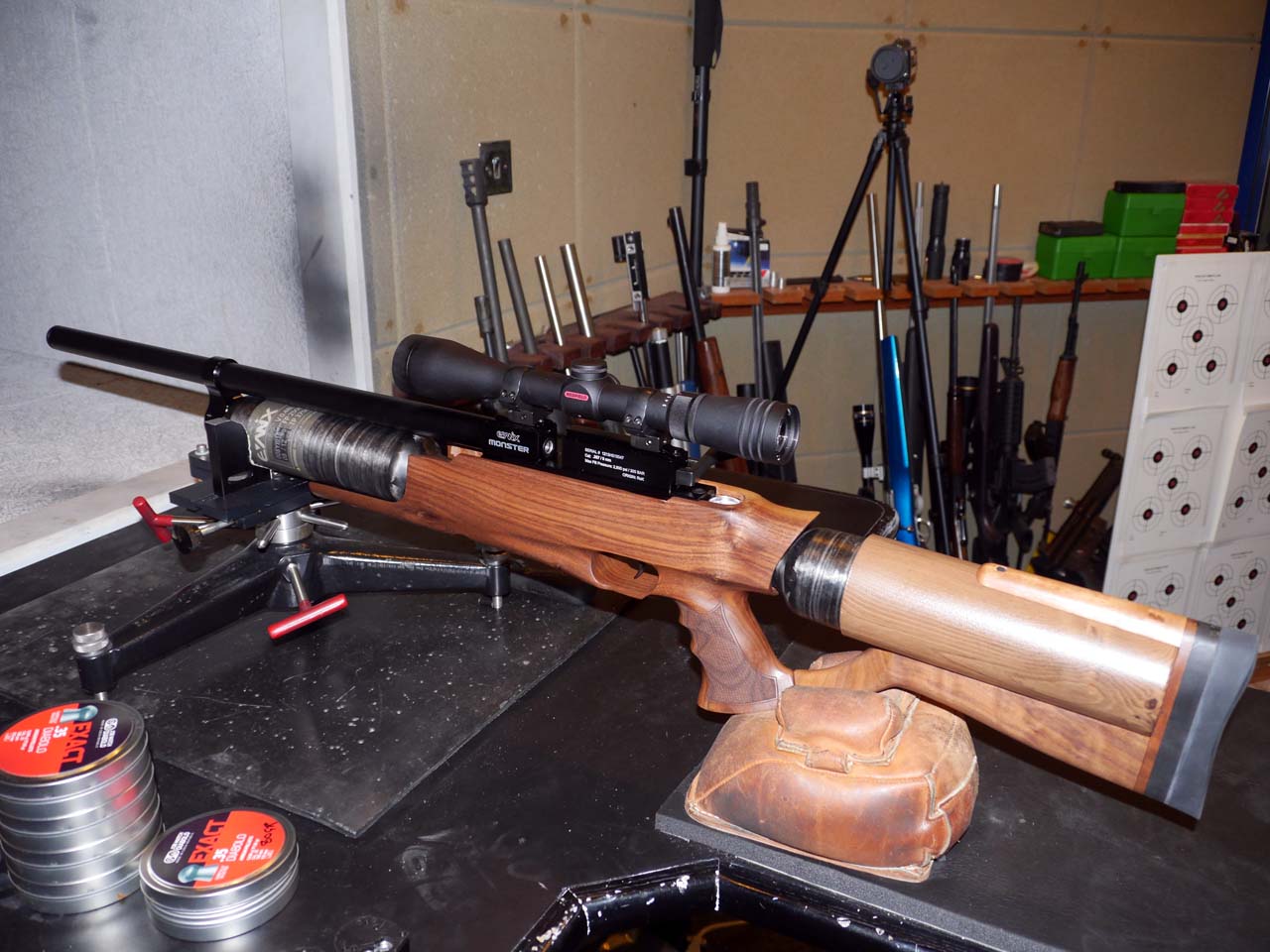 We got the Evanix Monster Model air rifle. It is in 9mm Caliber, and has two air cylinders. One as a forearm and one in the stock. These two provide plenty of air for many accurate shots, as you will see. The rifle is made in the Republic of Korea, has a 7 round magazine. And unlike many magazine fed air rifles that we have had here, it is very easy to load. 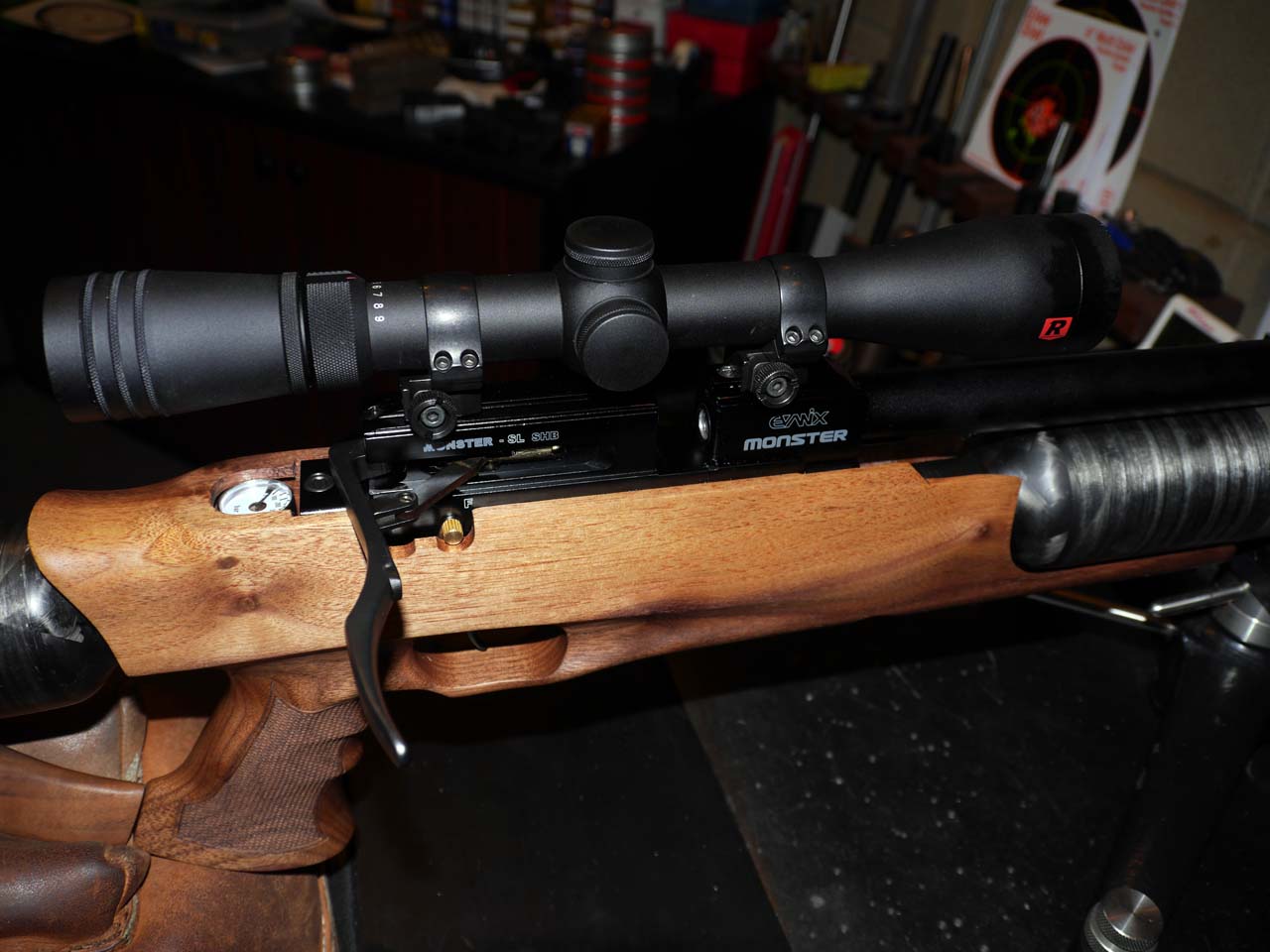 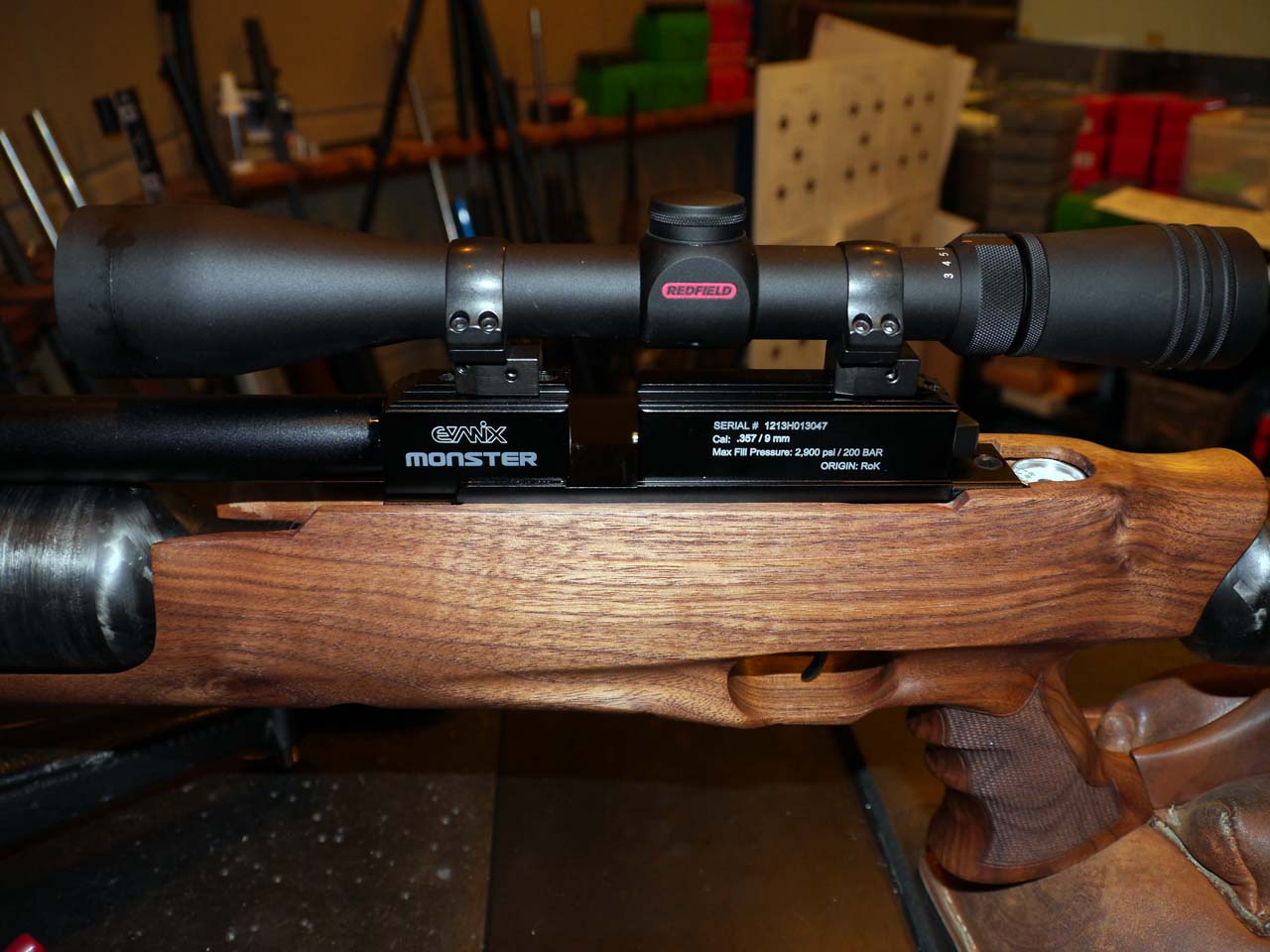 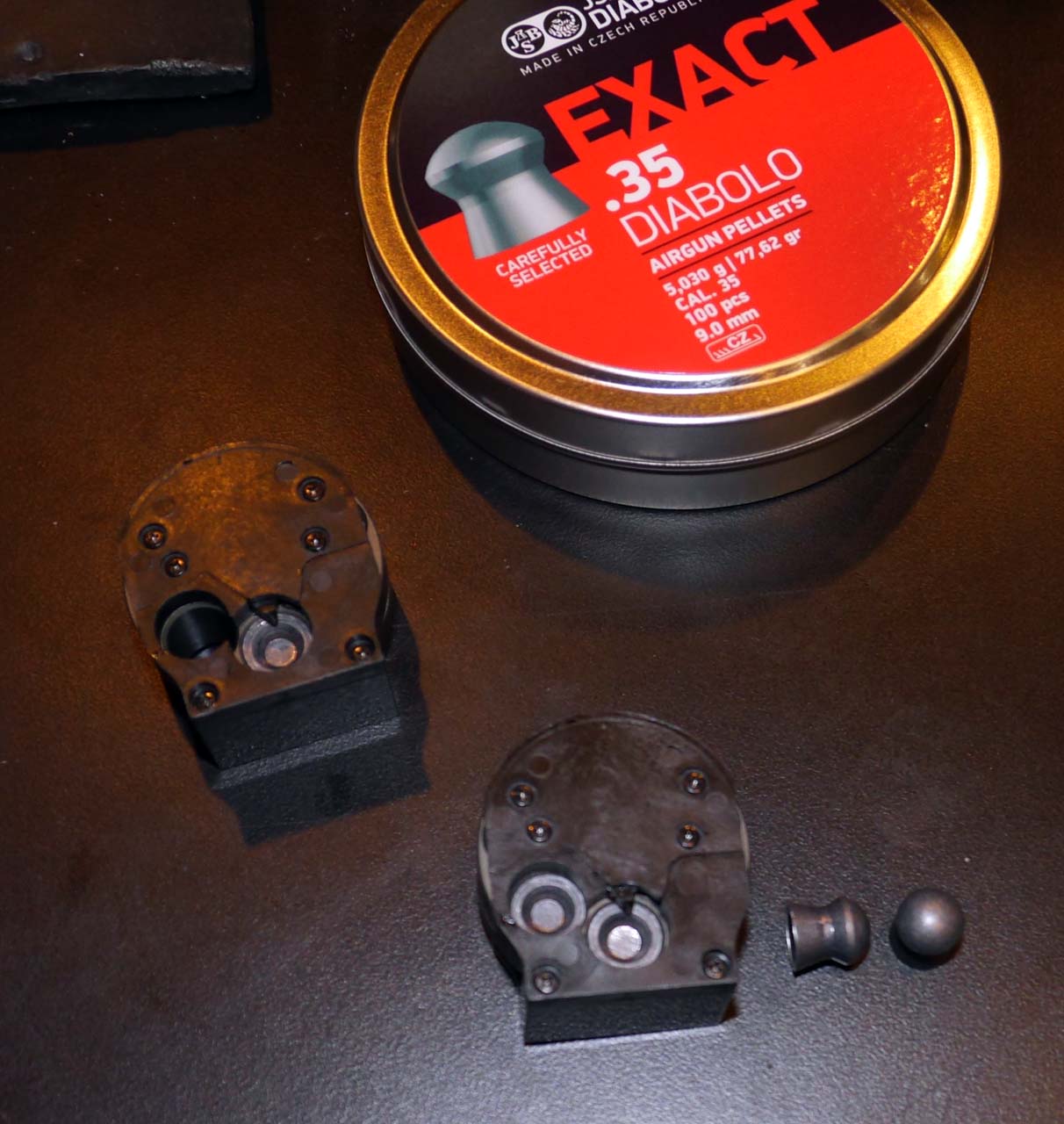 First thing we tried was the accuracy test, as the pressure gets lower. The rifle shot about 1 inch groups from 200 Bars all the way to just over 50 Bars on its pressure gauge. We filled it to 200 Bars, and shot it over the chronograph to check the drop in velocity as the pressure went down. It took 28 shots for the pressure to drop from 200 Bars to 150 Bars. 70 shots to drop from 200 Bars to 100 bars 124 shots to drop from 200 Bars to 50 Bars. Velocity readings, from a full air tank at 200 Bars, taken every 10 shots are as follows: 832 fps 767 fps 751 fps 753 fps 730 fps 648 fps 634 fps 639 fps 614 fps 604 fps 590 fps 576 fps 551 fps 518 fps 480 fps 438 fps 390 fps Six shots after the above the velocity was 321 fps, and we ran out of pellets. 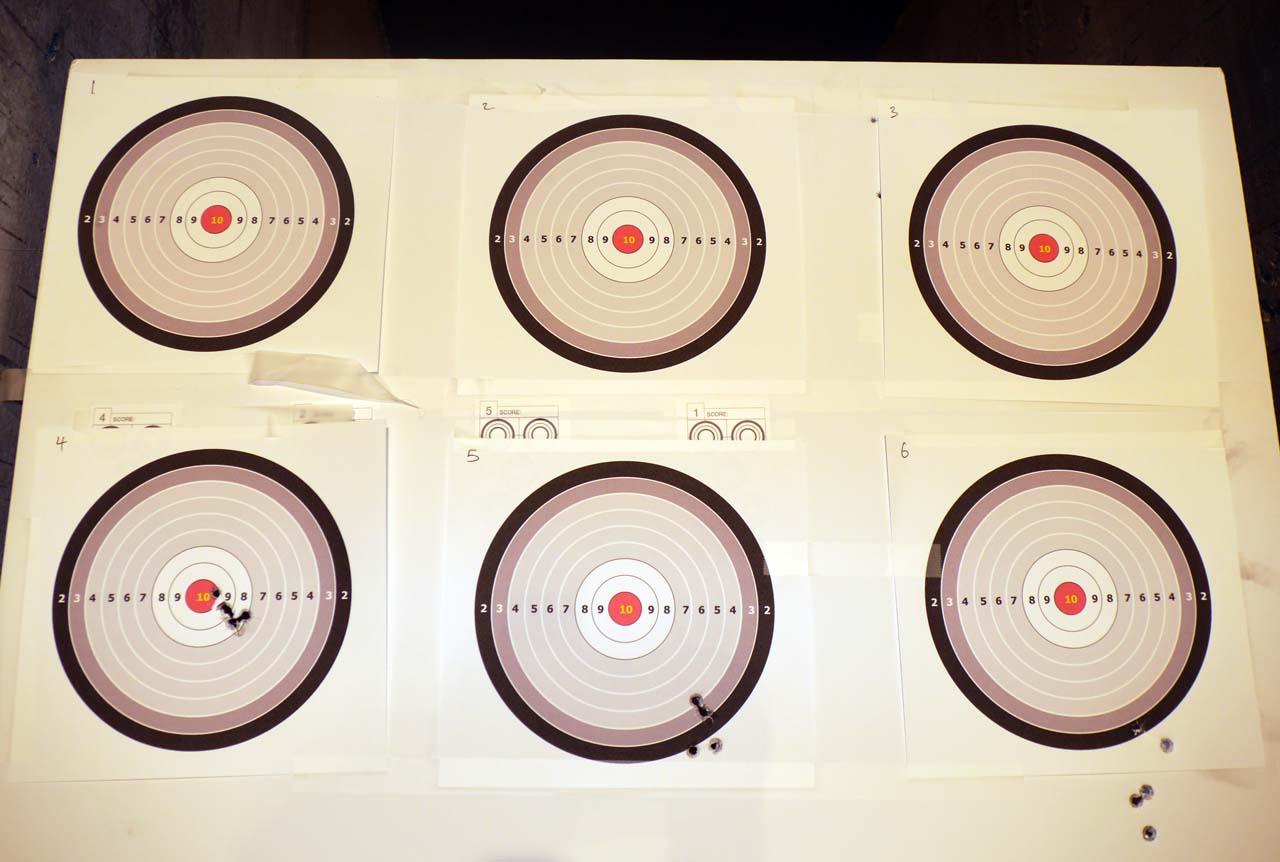 The above target is to show how much drop there has been from a full tank at 200 Bars to 50 Bars. The aiming point is the target above, the left target shows a pellet drop of about 10 inches. You will also see how the accuracy, in addition to more drop, has deteriorated. 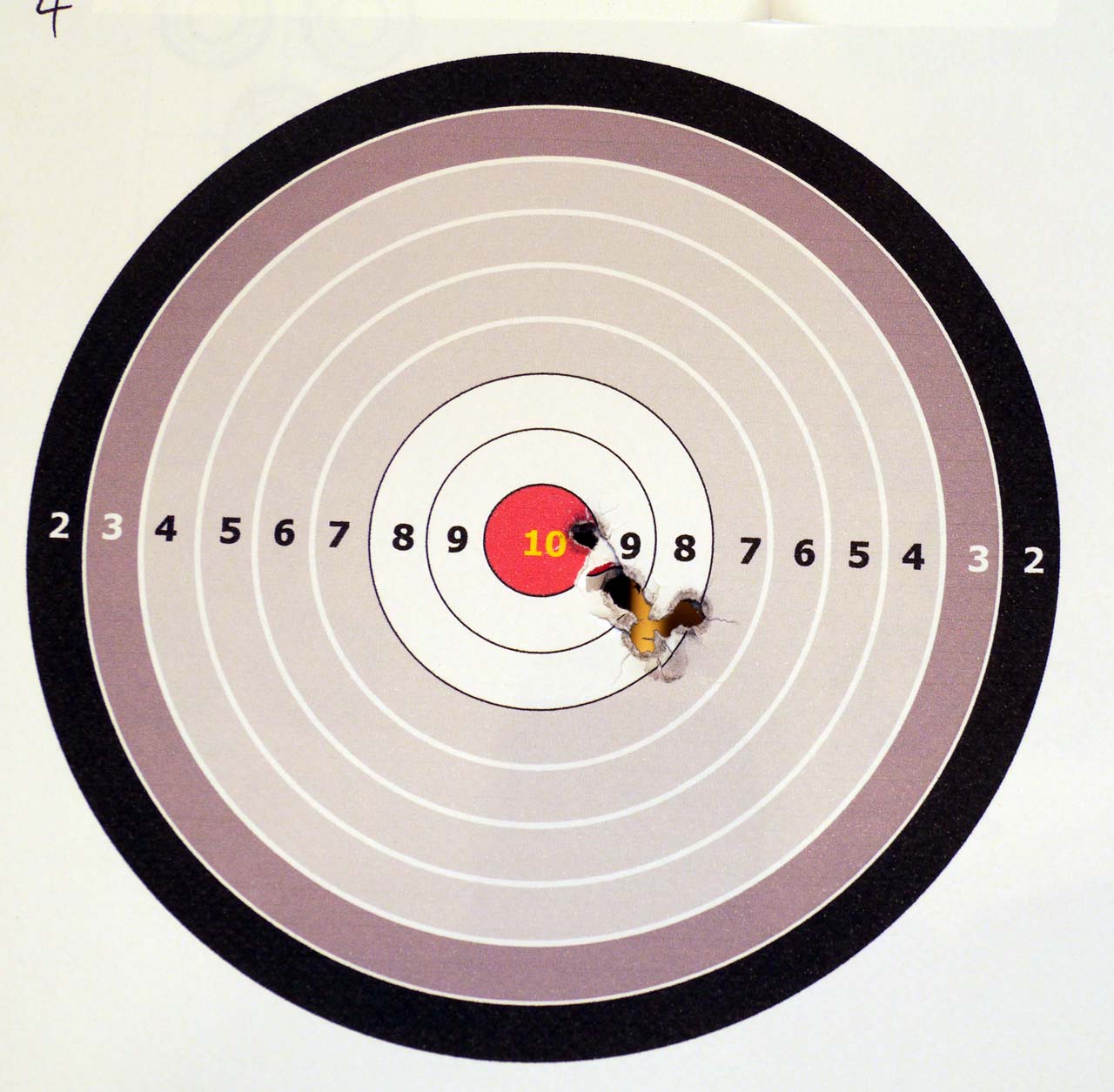 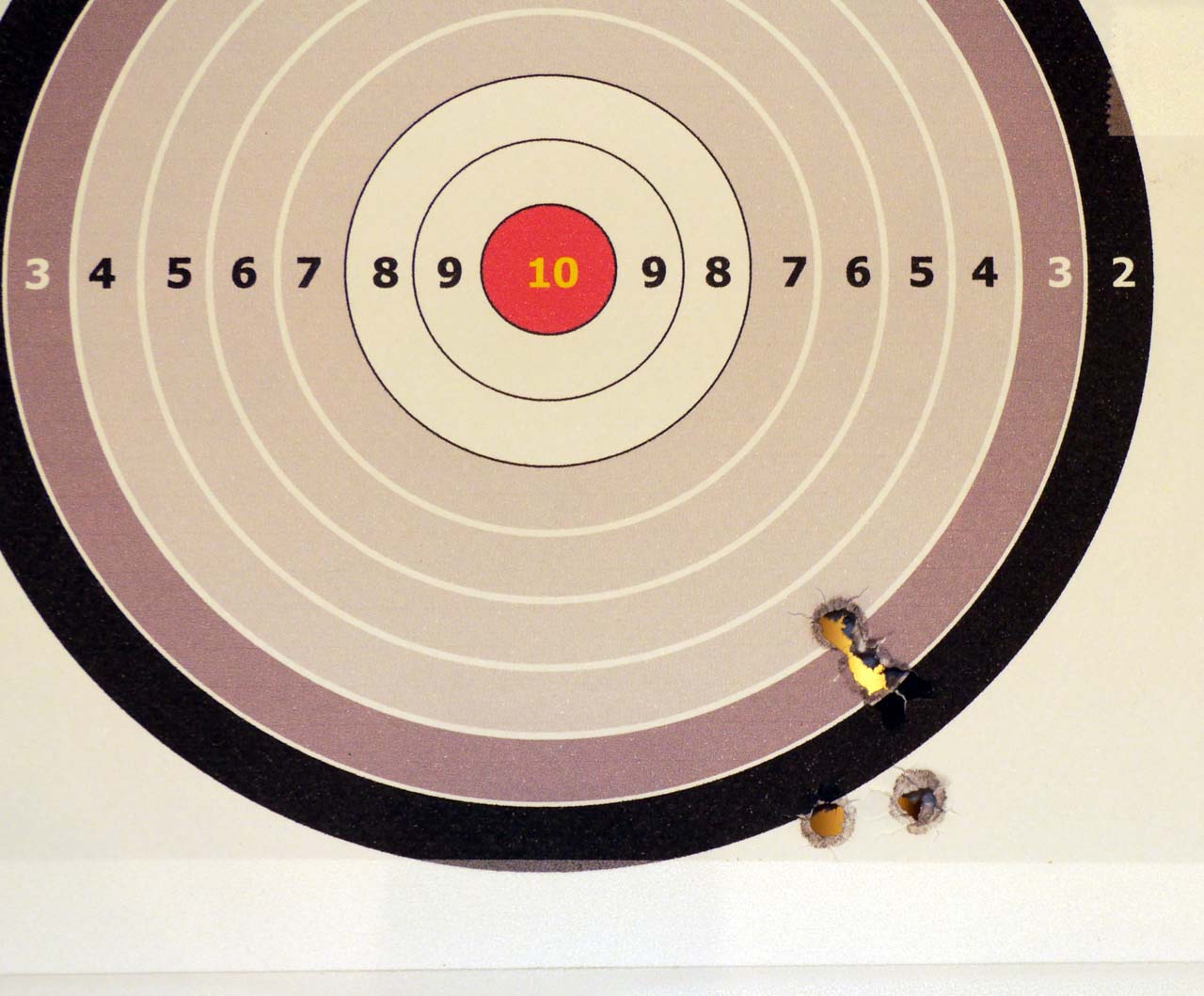 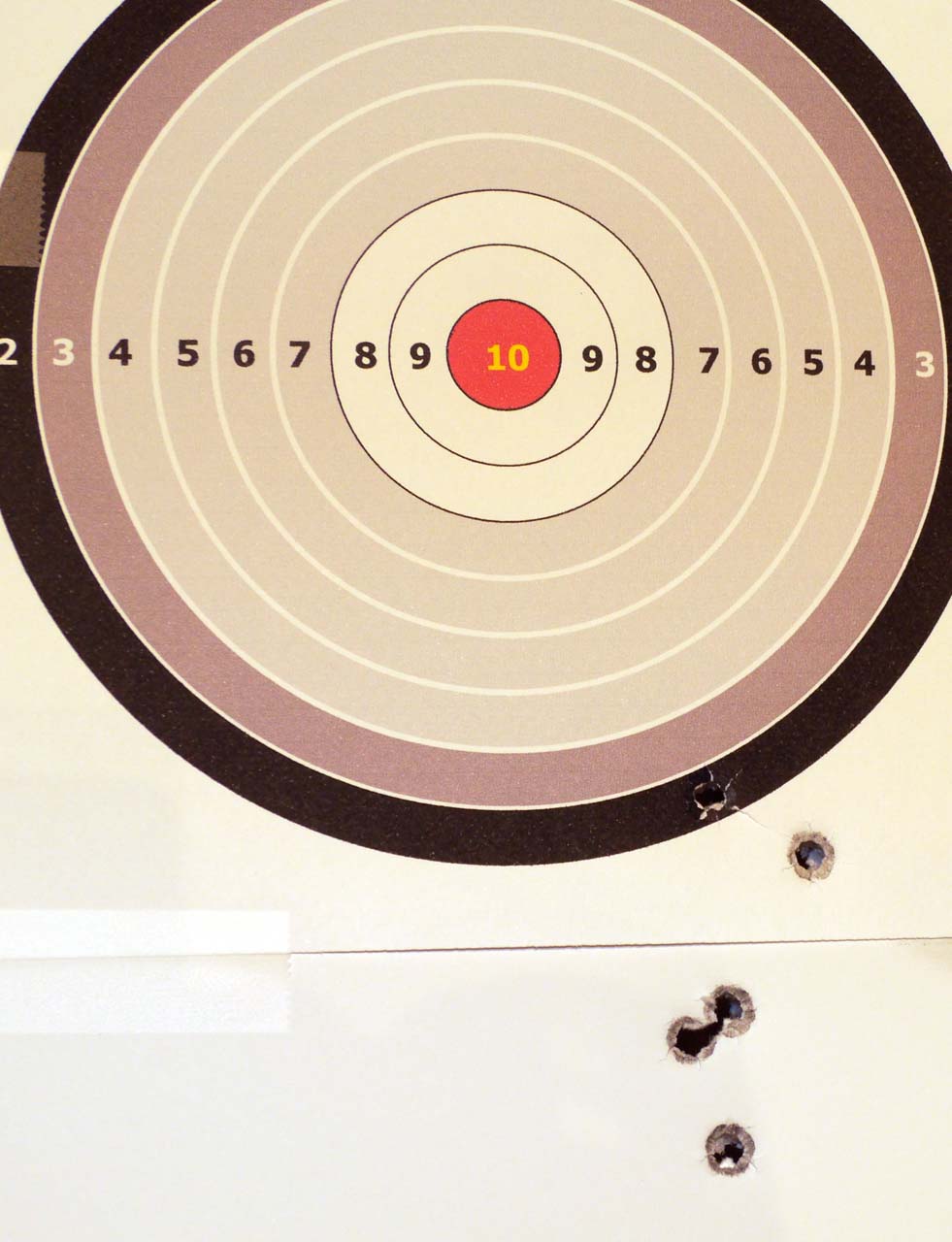 | ||
|
| one of us |
That is a lot of shooting per refill. Now go cull some pests with it. Varmint Safari In Dubai: Walter could be either hunter or prey. Don't let Walter shoot himself with that one, you must do it for him. As long as it is a head shot, you cannot harm Walter! Here is a fascinating air rifle from the 1700's designed by an Italian, Mr. Girandoni. 20-round, tubular magazine, repeater, that could shoot through a 1" thick pine board at 100 yards, with a 46-caliber lead ball, near silent, like magic to the primitives. Some fearsome ju-ju! It actually became a military firearm, Austrian Army service rifle, had about same ballistics as a 45 ACP handgun. Lewis&Clark expedition had one, used it to impress the native Americans, must have saved their scalps. A most important air rifle: http://home.nra.org/history/vi...-girandoni-air-rifle Lewis & Clark Girandoni Air Rifle Presented by the NRA National Firearms Museum This could be the most important historical gun in the history of the U.S. It was used by Lewis & Clark during their Corps of Discovery expedition from 1803-1806. The illusion of superior firepower this single air rifle created — opponents never knew if there was one air rifle or 38 air rifles — enabled the small band of explorers to safely travel from east to west and back again and claim an area greater than one-half of the landmass of North America for the U.S. The Lewis & Clark Air Rifle can be seen at the NRA National Firearms Museum in Fairfax, Virginia. http://en.wikipedia.org/wiki/Girandoni_Air_Rifle 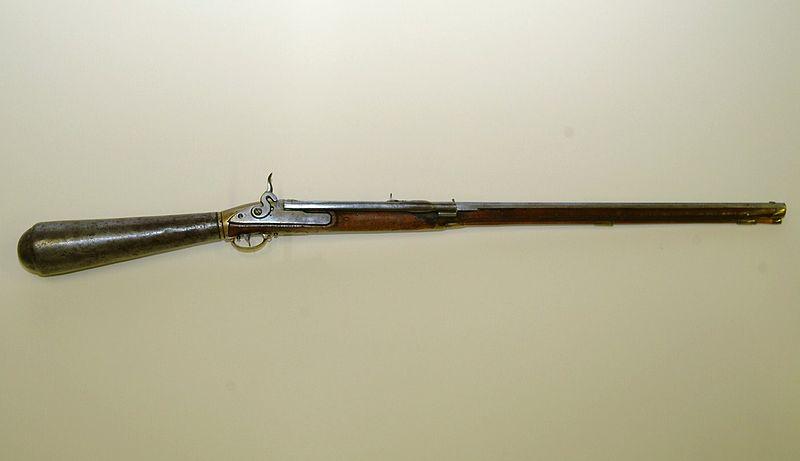 Girandoni Air Rifle: The Girandoni Air Rifle was an airgun designed by Tyrolian inventor Bartholomäus Girandoni circa 1779. The weapon was also known as the Windbüchse ("wind rifle" in German). One of the rifle's more famous associations is its purported use on the Lewis and Clark Expedition to explore and map the western part of North America in the early 1800s. History and use: The Girandoni air rifle was in service with the Austrian army from 1780 to around 1815. The advantages of a high rate of fire, no smoke from propellants, and low muzzle report granted it initial acceptance, but it was eventually removed from service for several reasons. While the detachable air reservoir was capable of around 30 shots it took nearly 1500 strokes of a hand pump to fill those reservoirs. Later, a wagon-mounted pump was provided. The reservoirs themselves, made from hammered sheet iron held together with rivets and sealed by brazing, proved very difficult to manufacture using the techniques of the period and were always in short supply. In addition, the weapon was very delicate and a small break could make it inoperable. Finally, it was very different from any other weapon of the time and any soldier using it needed to be highly trained. The Lewis and Clark Expedition used the rifle in the demonstrations that they performed for nearly every Native American tribe they encountered on the expedition.[1][2] Design and capabilities: The rifle was 4 ft (1.2 m) long and weighed 10 lbs (4.5 kg), about the same basic size and weight as other muskets of the time. It fired a .46 caliber ball[3] at a velocity similar to that of a modern .45 ACP and it had a tubular, gravity-fed magazine with a capacity of 20 balls. This gravity operated design was such that the rifle had to be pointed upwards in order to drop each ball into the breech block. Unlike its contemporary, muzzle-loading muskets, which required the rifleman to stand up to reload with powder and ball, the shooter could reload a ball from the magazine by holding the rifle vertically while lying on his back and operating the ball delivery mechanism. The rifleman then could roll back into position to fire, allowing the rifleman to keep a "low profile". Contemporary regulations of 1788 required that each rifleman, in addition to the rifle itself, be equipped with three compressed air reservoirs (two spare and one attached to the rifle), cleaning stick, hand pump, lead ladle, and 100 lead balls, 1 in the chamber, 21 in the magazine built into the rifle and the remaining 80 in four tin tubes. Equipment not carried attached to the rifle was held in a special leather knapsack. It was also necessary to keep the leather gaskets of the reservoir moist in order to maintain a good seal and prevent leakage.[4] The air reservoir was in the club-shaped butt. With a full air reservoir, the Girandoni air rifle had the capacity to shoot 30 shots at useful pressure. These balls were effective to approximately 150 yards on a full load. The power declined as the air reservoir was emptied .[5] Importance: The Girandoni air rifle was an important first. It was the first repeating rifle of any kind to see military service. It was one of the first uses of a tubular magazine. And, although it saw service for only 35 years, it predated and was more advanced in design and mechanical technology than the Henry rifle which arrived fifty years later. (More like over 80 years later.) | |||
|
| Powered by Social Strata |
| Please Wait. Your request is being processed... |
|
 The Accurate Reloading Forums
The Accurate Reloading Forums  THE ACCURATE RELOADING.COM FORUMS
THE ACCURATE RELOADING.COM FORUMS  Other Topics
Other Topics  Air Rifle
Air Rifle  Test Report On Evanix Monster 9mm Air Rifle
Test Report On Evanix Monster 9mm Air Rifle

Visit our on-line store for AR Memorabilia

